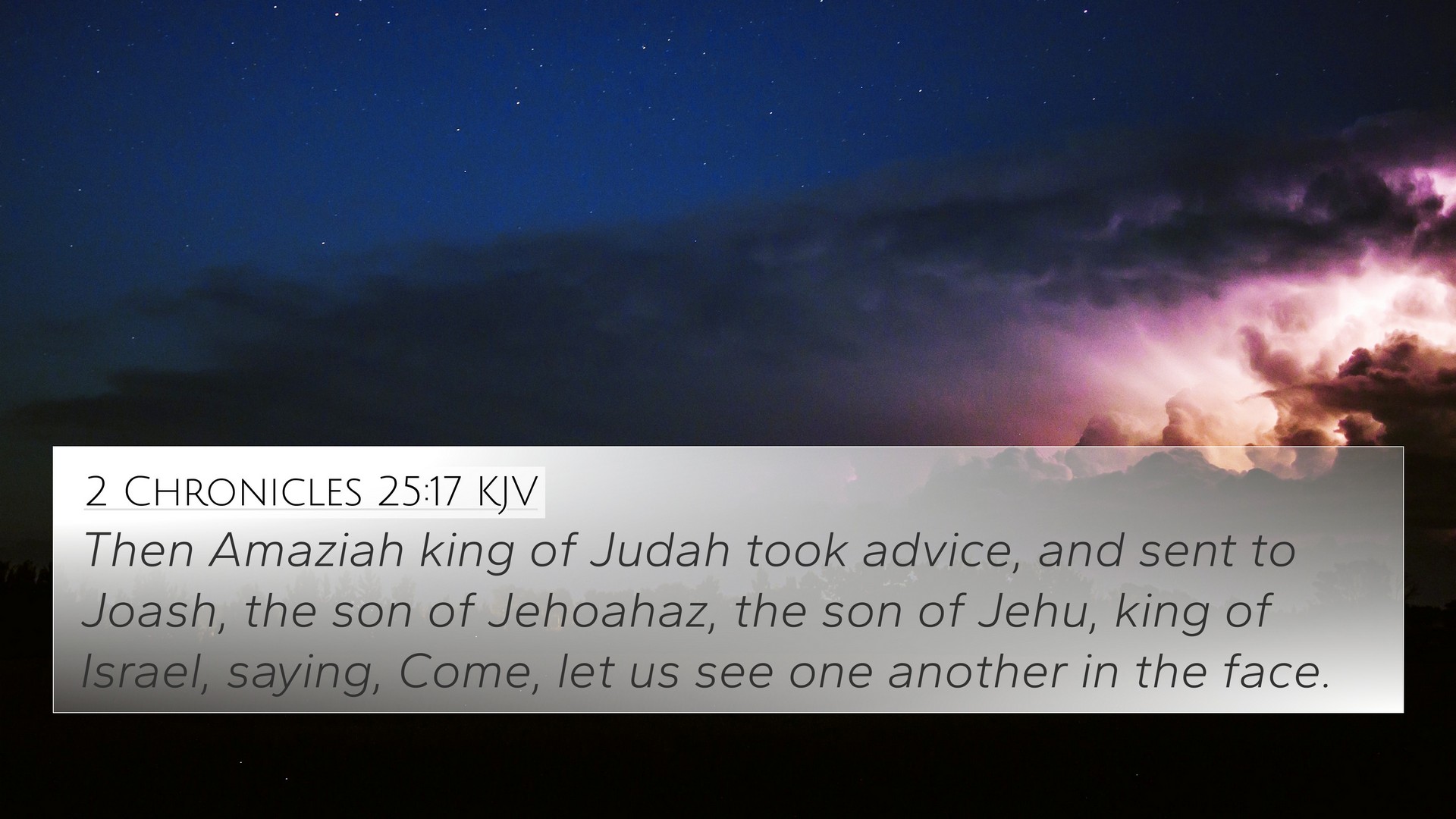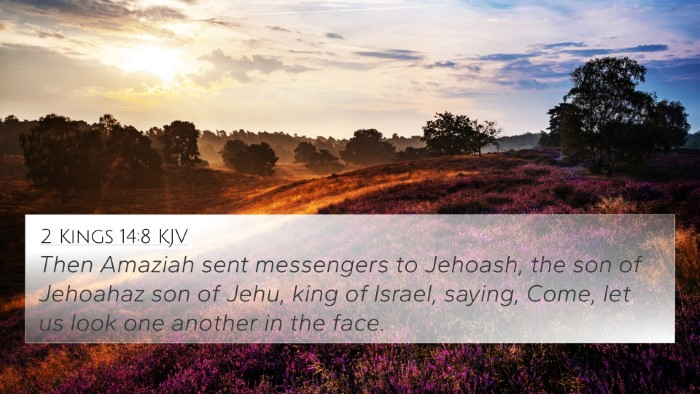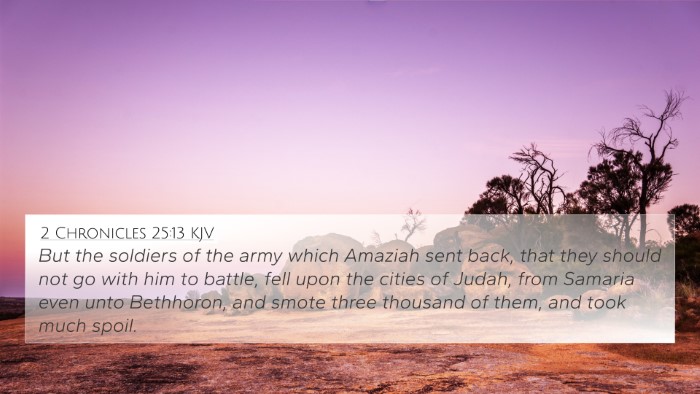Understanding 2 Chronicles 25:17
2 Chronicles 25:17 states: "Then Amaziah king of Judah took advice and sent to Joash the son of Jehoahaz, the son of Jehu, king of Israel, saying, Come, let us see one another face to face."
Overview of the Context
This verse takes place during the reign of Amaziah, king of Judah, who is depicted as a leader seeking validation and perhaps a show of strength by engaging with the king of Israel. By sending a challenge, he attempts to establish his authority and military capability.
Commentary Insights
-
Matthew Henry:
Henry suggests that Amaziah, after a successful military campaign, became proud and sought to establish his kingdom's influence by inviting confrontation with Israel. This invitation may reflect both daring and folly, as it ignored the existing tensions between Judah and Israel.
-
Albert Barnes:
Barnes emphasizes the political ramifications of Amaziah's actions. He views Amaziah’s request as a miscalculation, as it seemed to presume mutual respect where there was none. It highlights the underlying conflict and rivalry between the two kingdoms.
-
Adam Clarke:
Clarke provides a historical analysis, suggesting that Amaziah's invitation was a way to assert his strength but also a reflection of his waning reliance on God. Clarke posits that this encounter was meant to establish a potential alliance, yet it was filled with pretense, leading to subsequent ramifications.
Key Themes and Interpretations
-
Political Ambition:
Amaziah's communication with Joash signifies the drive for power and influence, exemplifying how dialogues between leaders can lead to greater tensions.
-
Spiritual Decline:
As noted by Clarke, Amaziah's actions show a departure from relying on God’s guidance, instead opting for diplomatic confrontations.
-
Evoking Conflict:
The request may also be seen as inciting conflict rather than seeking peace, suggesting the precarious nature of political relationships.
Cross References for Further Study
To enhance understanding of this verse and its implications, consider the following related scripture cross-references:
- 2 Kings 14:8-11: This passage describes the confrontation between Amaziah and Joash, illuminating the dynamics addressed in 2 Chronicles 25:17.
- 2 Chronicles 14:11: Reflects on the importance of seeking divine help in battles, contrasting Amaziah’s later choices.
- Isaiah 7:1-2: Discusses the conflict between Israel and Judah, reinforcing the historical rivalry present during Amaziah's reign.
- Amos 7:9: Prophesies the fall of Israel, highlighting the spiritual discord that underpinned relations between the nations.
- Proverbs 16:18: Links pride to downfall, an underlying theme in Amaziah's narrative.
- Numbers 20:14: Provides a historical precedent for the hostilities between Edom and Judah, akin to Amaziah's situation with Israel.
- 2 Chronicles 20:15: Emphasizes reliance on God, a contrast to Amaziah's direct confrontation with Israel.
- Micah 1:1-5: Discusses prophetic insights regarding the fate of both Israel and Judah, providing context for their tumultuous relationship.
- 2 Kings 13:14: Details the history and relationships of the kings that shaped the conflict between Judah and Israel, enriching the context of Amaziah's invitation.
- James 4:6: A New Testament reference that deals with the theme of humility, contrasting with Amaziah's pride in seeking confrontation.
Conclusion
In summary, 2 Chronicles 25:17 serves as a crucial point of reflection on the themes of power, pride, and the complexities of inter-kingdom relationships. Through the lens of various commentaries, one can see how Amaziah's approach encapsulates a broader narrative of spiritual compromise and the consequences that arise from it. Understanding cross-references deepens the insight gained from this verse, revealing the interconnectedness of biblical themes and the warnings that they impart.
Tools for Further Study
For those seeking to explore these themes further, various tools for Bible study and cross-referencing can be beneficial:
- Bible Concordance: A comprehensive tool for finding verse references and their occurrences.
- Bible Cross-Reference Guide: Essential for identifying related verses and themes.
- Cross-Reference Bible Study: A methodical approach to exploring scripture connections.
- Bible Reference Resources: These can enhance understanding through comprehensive analyses.
- Identifying Connections Between Testaments: This offers insights into how they relate to each other.






